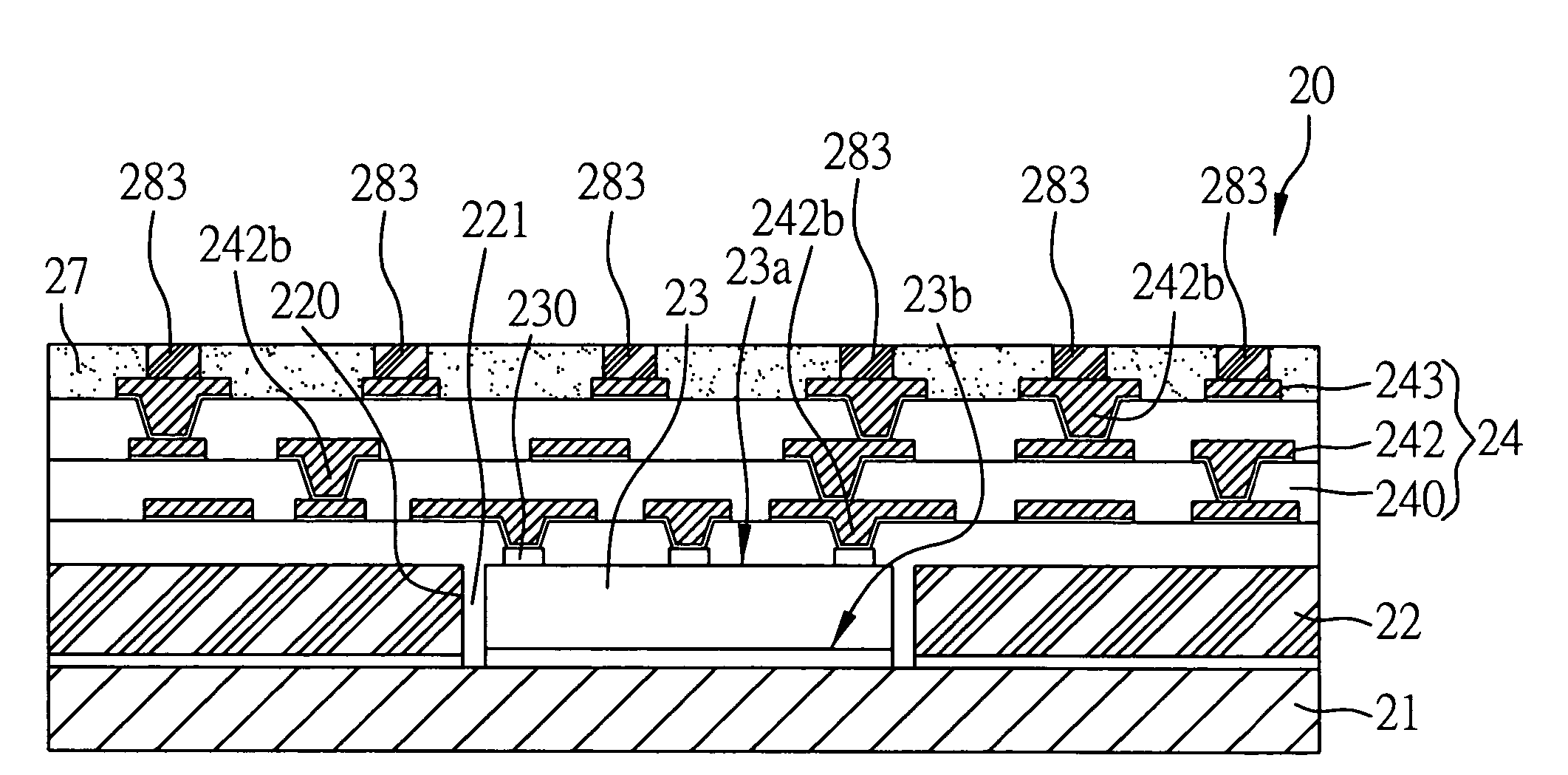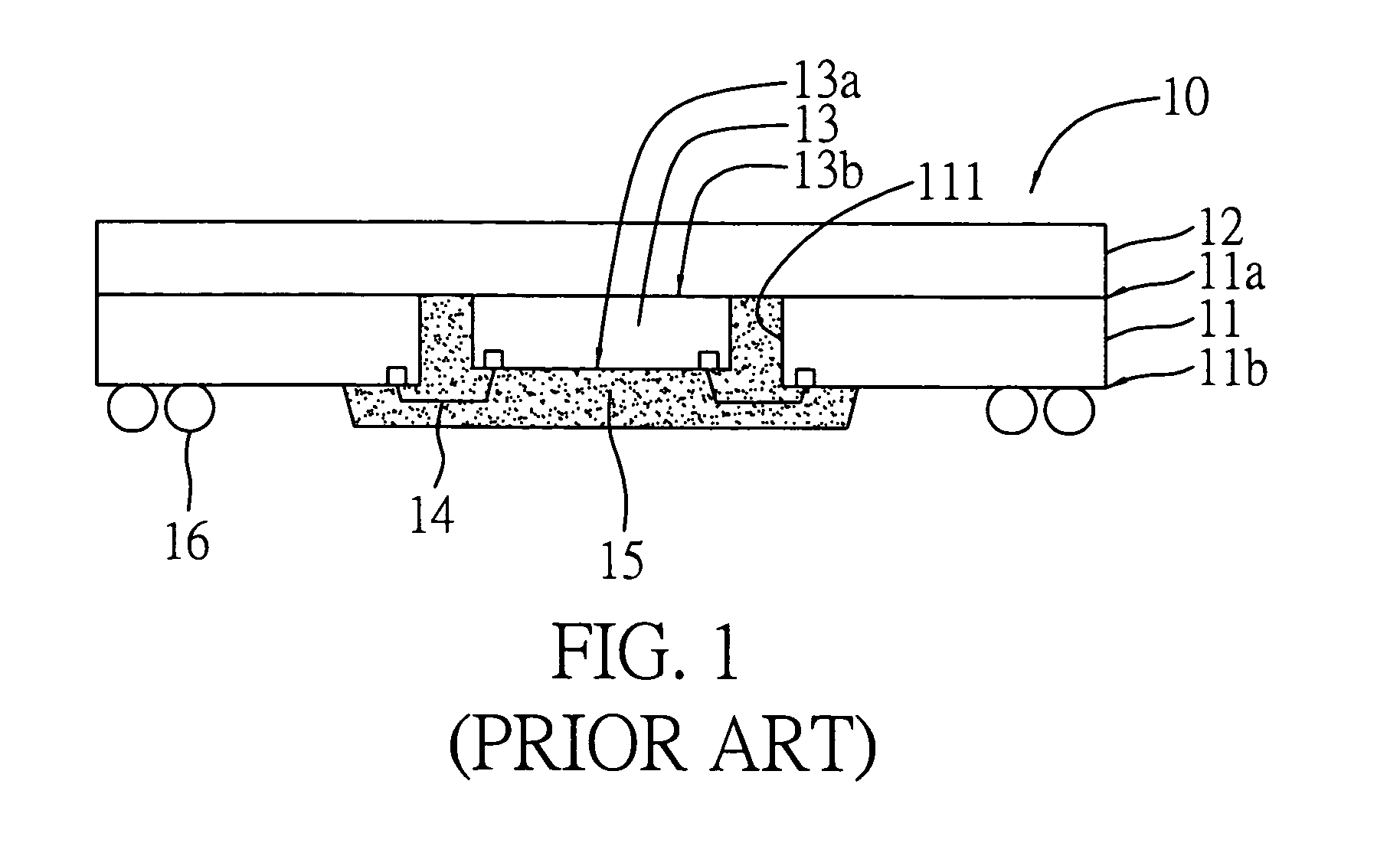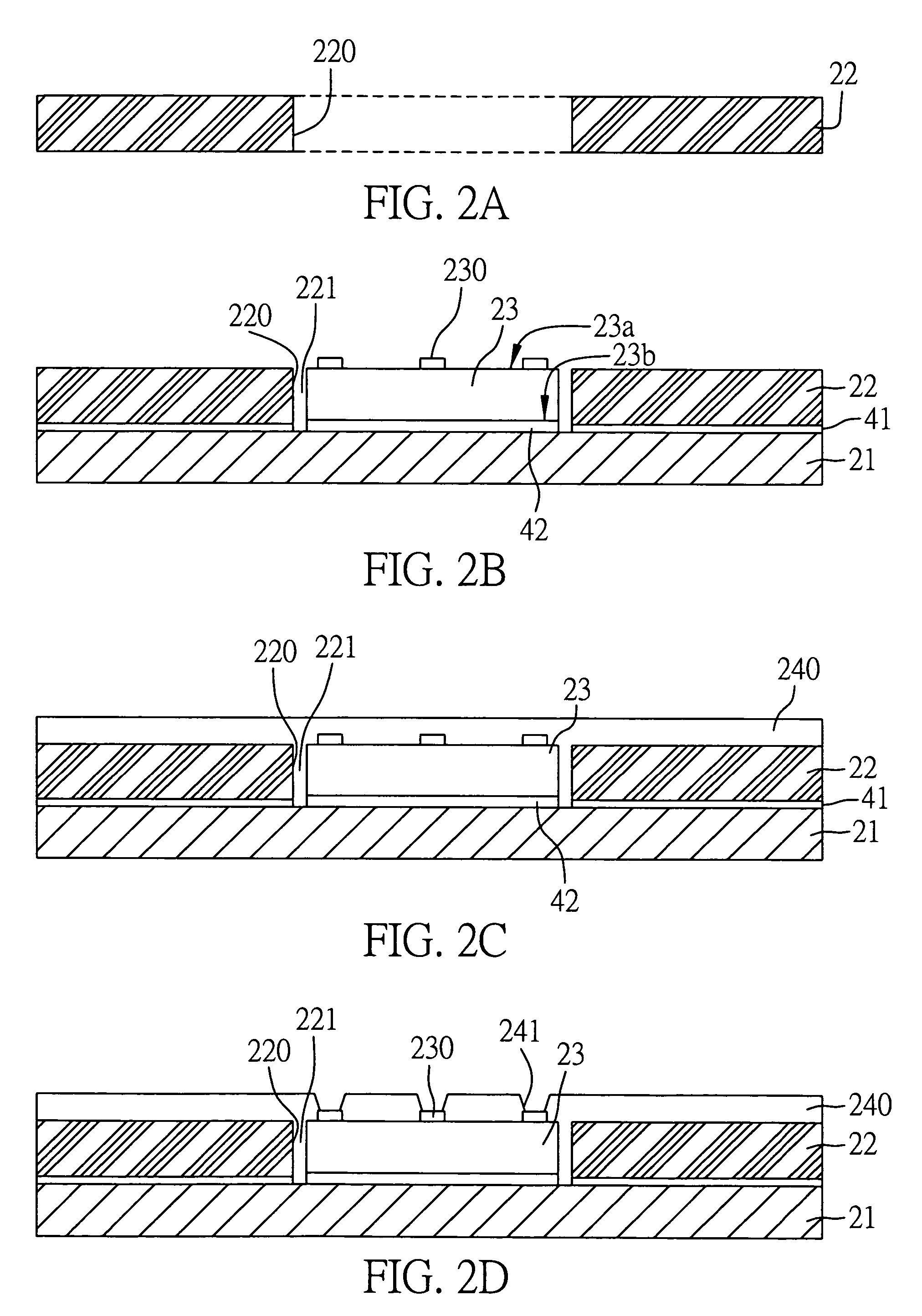Method for fabricating thermally enhanced semiconductor device
a technology of thermal enhancement and semiconductor devices, which is applied in the direction of semiconductor devices, semiconductor/solid-state device details, electrical equipment, etc., can solve the problems of significant problems during practical operation, heat generation, and chip performance and lifetime damage, and achieve good electromagnetic shielding effect, effective dissipation of heat produced by chips, and reduction of overall thickness of semiconductor devices
- Summary
- Abstract
- Description
- Claims
- Application Information
AI Technical Summary
Benefits of technology
Problems solved by technology
Method used
Image
Examples
Embodiment Construction
[0019]The preferred embodiments of a thermally enhanced semiconductor device and its fabrication method proposed in the present invention are described with reference to FIGS. 2A-2K and 3.
[0020]FIGS. 2A-2K show a series of procedural steps of the method for fabricating a thermally enhanced semiconductor device according to a first preferred embodiment of the present invention.
[0021]Referring to FIG. 2A, a support plate 22 is prepared, which can be a metal plate, insulating plate or circuit board. The support plate 22 is formed with at least one opening 220 penetrating through the same. The metal plate can be made of copper. The insulating plate can be made of epoxy resin, polyimide resin, cyanate ester, carbon fiber, BT (bismaleimide triazine) resin, or a mixture of epoxy resin and fiber glass. The circuit board can be a pre-treated multi-layer circuit board, which is composed of a core layer with a conductive metal layer formed on at least one surface of the core layer; next the co...
PUM
 Login to View More
Login to View More Abstract
Description
Claims
Application Information
 Login to View More
Login to View More - R&D
- Intellectual Property
- Life Sciences
- Materials
- Tech Scout
- Unparalleled Data Quality
- Higher Quality Content
- 60% Fewer Hallucinations
Browse by: Latest US Patents, China's latest patents, Technical Efficacy Thesaurus, Application Domain, Technology Topic, Popular Technical Reports.
© 2025 PatSnap. All rights reserved.Legal|Privacy policy|Modern Slavery Act Transparency Statement|Sitemap|About US| Contact US: help@patsnap.com



